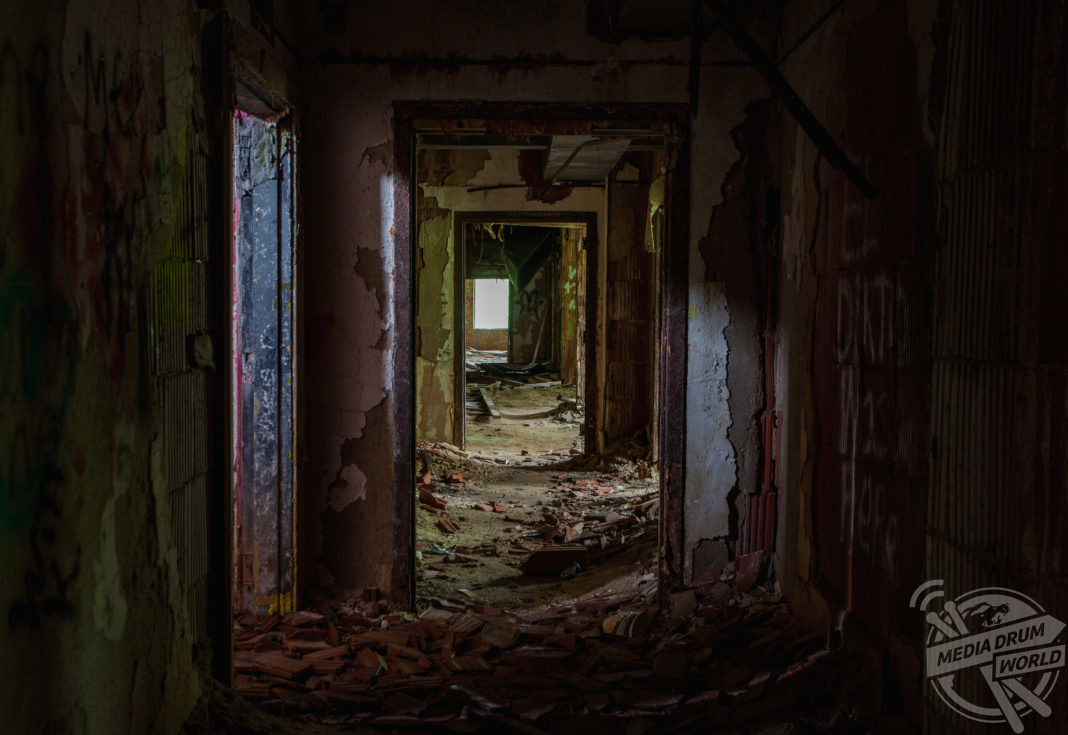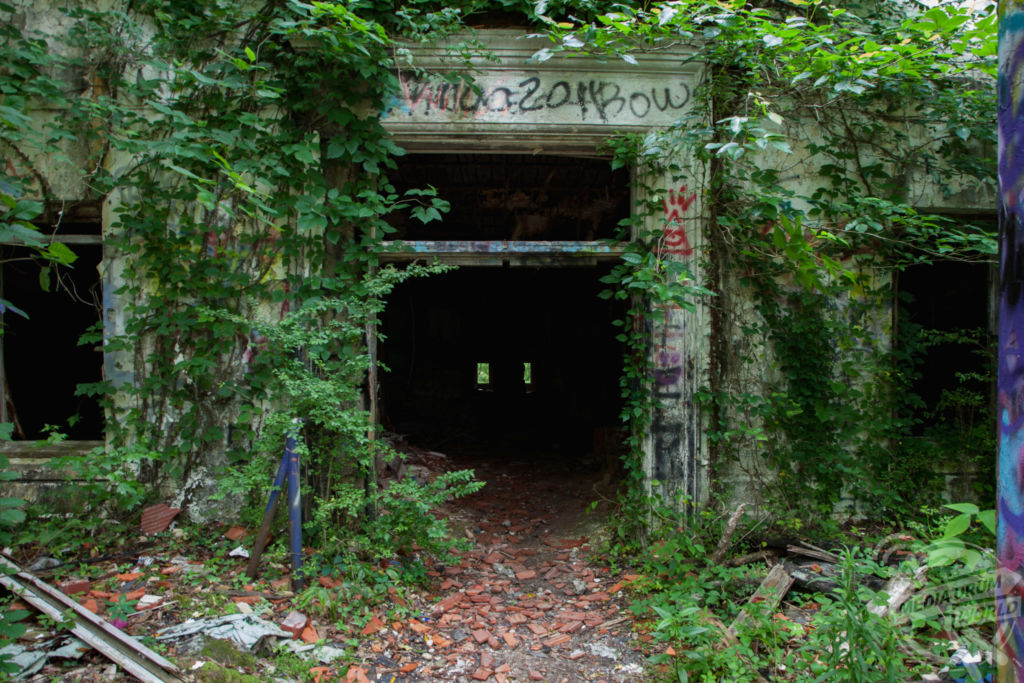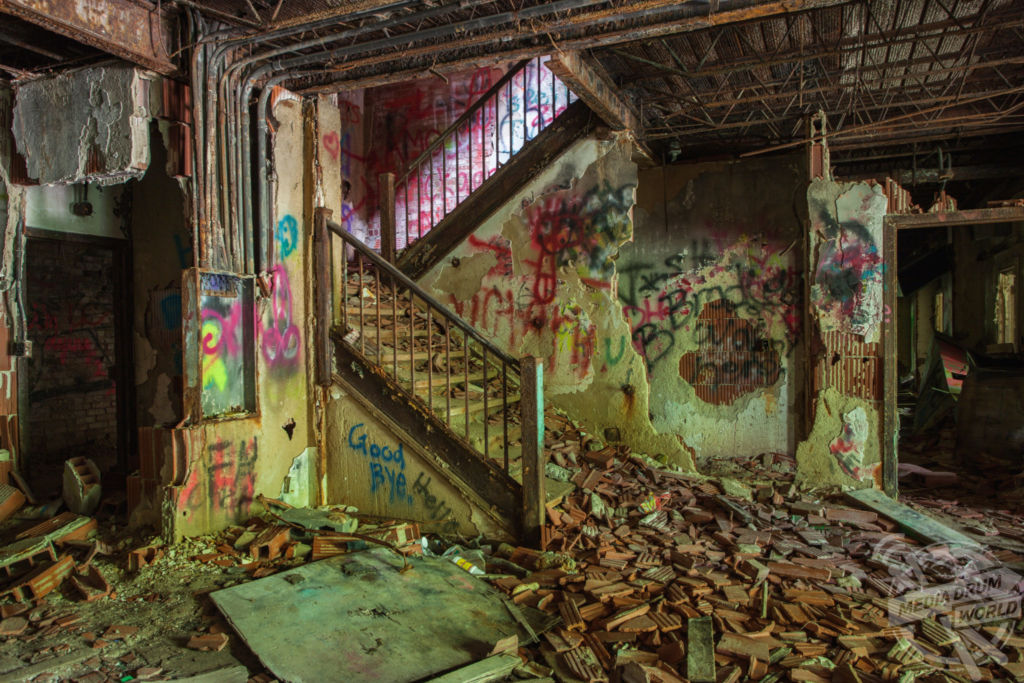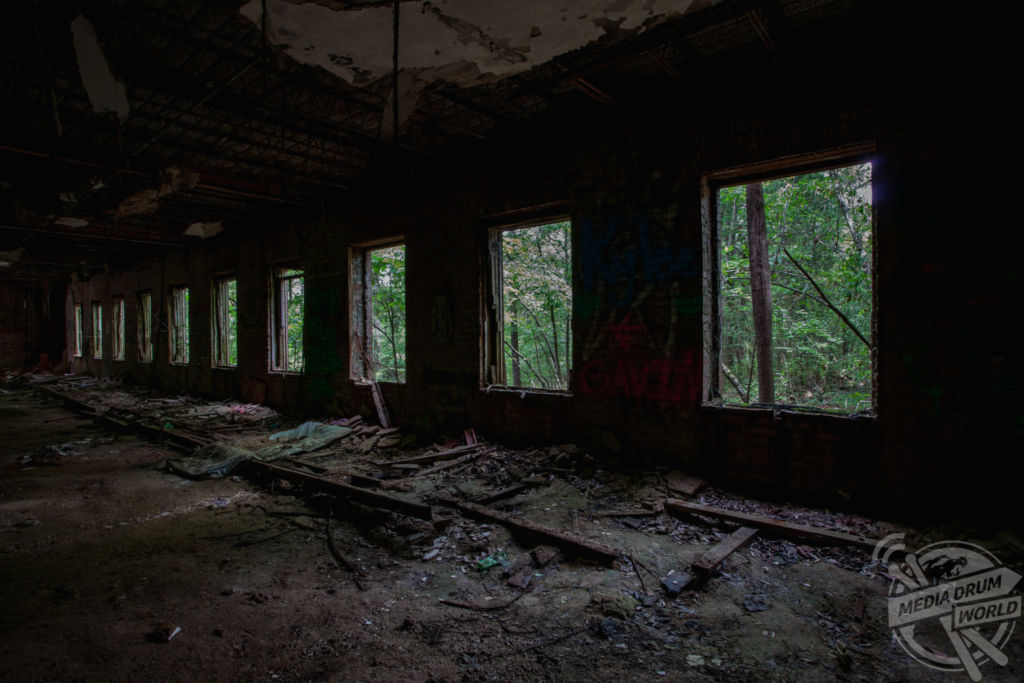
By Alex Jones
DISTRESSING photos of a psychiatric hospital which cruelly forced its African American patients to work for free on nearby plantations, had ‘faeces smeared across its walls’, and forced over 130 male service users to share just one shower have emerged.
The Jemison Centre, part of the Alabama State Hospital for the Insane, was built in 1939 and housed patients until 1977 and was mired with controversy whilst it was open. Today, the abandoned facility is a mecca for urban explorers and daredevils – and is reportedly one of the most haunted buildings in the region.
Chilling photos of the derelict property, which has been heavily vandalised and subjected to arson attacks over the years, show the concrete exterior overgrown with trees and greenery, meaning little light is able to penetrate into the asylum; corridors filled with detritus, graffiti and lingering memories; and walls and ceiling ripped away by vandals as well as time.

Another striking shot shows a room with a solitary bathtub, possibly the room where scores of inpatients had to make use of the hospital’s meagre washing facilities.
The disturbing photos were taken by a photographer who specialises in dilapidated buildings, known only as Abandoned Southeast. He was drawn to the Jemison Center after hearing about its horrifying history – a devastating tale of enforced slavery, abuse, and landmark legal battles.
“The Jemison family settled near Tuscaloosa, Alabama in the 1830s and became one of the wealthiest and most influential families in the state,” explained Abandoned Southeast.
“Robert Jemison Jr. was a Confederate senator, a businessman, and entrepreneur. He built up a huge business empire in the area, including six plantations of over 10,000 acres. Jemison was also one of the leaders who built support for the Alabama State Hospital for the Insane, later renamed Bryce Hospital, which opened in 1861 in Tuscaloosa.

“After his death in 1871, Jemison’s largest plantation, known as Cherokee Place, was bequeathed to the State of Alabama Board of Mental Health. During the Segregation Era, a separate facility was established for African-American patients which became known as the Jemison Center, named for its namesake’s generosity. Before the Jemison Center was built, African-American patients were housed in the lofts of the barn at Bryce Hospital.
“Unfortunately, the plight of the African American patients would not improve in their new home.”
It is illegal to trespass in the abandoned Jemison Centre, but its close proximity to the University of Alabama means it is a popular spot for curious students to explore. Despite being recognised as an urban exploration and paranormal hot spot, the dark history of the building is not widely appreciated.
“The approach to treatment at Bryce followed the concept that patient work was an important component of mental healthcare,” added Abandoned Southeast.

“Patients housed at the Jemison Center were expected to tend the fields around the property. This was a part of the self-sustainability of Bryce as well as a way to feed a large amount of patients with limited state funding. However, by the 1960s, the concept of patients remaining in the hospital for long periods of time, while at the same time working productively, became a subject of public concern. Many citizens felt that the hospital retained patients as a source of free labour.
“In 1970, the Jemison Center made headlines after a journalist from the Tuscaloosa News visited the facility and reported on the abhorrent conditions. The report read:
‘Human faeces were caked on the toilets and walls; urine soaked the aging floors; many beds lacked linens; patients were sleeping on the floor. One small shower served 131 male patients; the 75 female patients only had one shower too. Most of the patients at Jemison were highly tranquilized and appeared to have not bathed in days. All appeared to lack any semblance of treatment. The stench was almost unbearable.’
“Conditions at the Jemison Center and at Bryce Hospital in Tuscaloosa led to a landmark lawsuit – Wyatt v. Stickney.”
At the time of the lawsuit, Bryce Hospital had over 5,000 patients living in intolerable conditions that the Montgomery Advertiser compared to a ‘concentration camp’. In 1971 the lawsuit was expanded to include patients at Alabama’s other inpatient mental health facilities and a staggering 33 years later the case of Wyatt v. Stickney came to a conclusion. The court ruled that every patient has a right to periodic psychiatric evaluations and a right to live in the least restrictive environment possible. The decision had wide-ranging effects, and as a result, many patients were released from mental institutions nationwide or transferred to homes designed to provide them with as much independence as feasible.

The case lasted through a tenure of nine Alabama governors and fourteen state mental health commissioners, the case was the longest mental health case in the US’s history. The State of Alabama estimates its litigation expenses at over $15 million.
But the story of the Jemison Center does not end there. Following its closure in the late 70s, the building’s story takes a supernatural turn.
“The Jemison Center is reportedly haunted,” said Abandoned Southeast.

“The building is a favourite spot of curious college students from the nearby University of Alabama, many of which have stated hearing unexplained noises like screams and footsteps or finding scratches on themselves after leaving. Some have witnessed debris being thrown or have seen shadows inside and around the grounds of the Jemison Center late at night.
“If I’m honest, I visited the grounds during the day and did not experience anything out of the ordinary but I can say the property is full of wildlife. I did spot two snakes laying across the warm driveway that leads up to the old asylum on our visit.”






